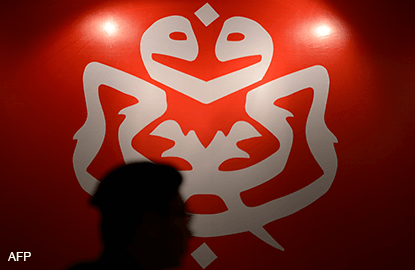
This article first appeared in The Edge Financial Daily, on July 22, 2016.
KUALA LUMPUR: Control and ownership of corporate Malaysia have shifted from Umno warlords and proxies to the executive, particularly the minister of finance, who has huge powers over government-linked investment companies (GLICs), Universiti Malaya professor Dr Edmund Terence Gomez said yesterday.
In a public lecture, Gomez said that in the 1980s and 1990s, many powerful Umno leaders had substantial interest and presence in the corporate sector as it was a source of patronage.
“That is not the case today. Today, you see a well-integrated executive controlling the corporate sector. That is the shift. We have an executive who is also the minister of finance.
“We are talking about extreme concentration of economic and political control. It is also important because the wealth concentration is in the hands of the GLICs,” said Gomez, who is also senior fellow at the Institute for Democracy and Economic Affairs think tank.
Gomez’s public lecture was based on preliminary research into ownership and control of GLICs. The research is on the seven federal GLICs, namely Minister of Finance Inc (MoF Inc), Permodalan Nasional Bhd (PNB), Khazanah Nasional Bhd, the Employees Provident Fund (EPF), Lembaga Tabung Angkatan Tentera (LTAT), Lembaga Tabung Haji and Kumpulan Wang Persaraan (Diperbadankan) (KWAP).
The seven GLICs have a significant hold on the economy by virtue of their investments in thousands of companies, both listed and unlisted. What’s more, the seven GLICs have an interest in investments estimated at over RM1 trillion.
What’s significant about Gomez’s findings is that the trend of removing the power base of Umno and concentrating it in the hands of the executive has never been seen in the past.
Gomez points out that the minister of finance has control of MoF Inc, which he describes as a “super entity at the top of the core periphery structure” that controls the GLICs, some banks and development financial institutions.
This affords the minister of finance significant economic control over key industries that GLICs are invested in, such as utilities, plantations, infrastructure and development, Gomez added.
By analysing the management and shareholding structures of these GLICs, Gomez points out that the minister of finance has both direct and indirect control of these GLICs and GLCs.
There are seven control-enhancing mechanisms that the government uses to control the GLICs: legislation, business groups, control of the financial sector, policies, directorships, golden shares and proxies.
For example, MoF Inc has direct ownership of Khazanah, while the prime minister, who is also the finance minister, chairs Yayasan Perlaburan Bumiputera which wholly-owns PNB.
The minister of finance also has influence over the EPF, LTAT, Tabung Haji and KWAP.
However, Gomez also argues that as much as the GLICs and GLCs serve social and political goals, they still have to perform economically.
“If you look at the GLC transformation plan, they have done well in terms of generation of revenue, dividends and profits. But they had to perform because the dividends go into these pension funds, if not the people will be angry.
“It’s not as simple as ‘Just because I have ownership and control, I am going to use it for rent-seeking’. As much as you’d want to, there is also an electorate to be worried about,” he said.